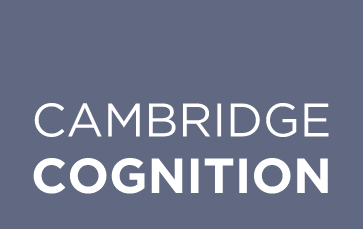Insights
6 April 2022
Hazardous drinking and cognition in schizophrenia, schizoaffective disorder and bipolar disorder
We recently caught up with Atiqul Haq Mazumder, a doctoral researcher at the University of Oulu, Finland. Here, he tells us about how he used CANTAB to understand more about whether hazardous drinking could affect cognition in people with schizophrenia, schizoaffective disorder and bipolar disorder.
Can you tell us a bit about yourself?
I am currently undertaking my doctoral research in the Research Unit of Clinical Neuroscience, Faculty of Medicine, University of Oulu, Finland. I will complete my PhD in 2022. I was an assistant professor in adult psychiatry at the National Institute of Mental Health, Dhaka, Bangladesh from 2013 to 2014. I completed a MD in Psychiatry from Bangabandhu Sheikh Mujib Medical University, Dhaka, Bangladesh in 2011. I have also served as an advisor and consultant for Thikana Psychiatric and Drug Addiction Clinic, Dhaka, Bangladesh since 2011 and have provided their telepsychiatry service since 2016.
What was your study aiming to discover?
The purpose of the study was to explore the association of hazardous drinking, alcohol-related disorder and hazardous drinking polygenic scores with cognition in schizophrenia, schizoaffective disorder, and bipolar disorder.
What methods did you use?
The study population included 10,417 participants from the Finnish SUPER-study, which is investigating the genetic mechanisms of psychotic disorders. We selected participants with the clinical diagnosis of schizophrenia, schizoaffective disorder, or bipolar disorder. Hazardous drinking and binge drinking were screened using the AUDIT-C test (Alcohol Use Disorders Identification Test for Consumption). Diagnosis of alcohol-related disorders including Alcohol Use Disorder (AUD) was obtained from the Care Register for Health Care (CRHC). Hazardous drinking Polygenic Score (PGS) was computed using LDPred program. Cognition was assessed using the Reaction Time Index (RTI) and the Paired Associates Learning (PAL, visual episodic memory) from the Cambridge Neuropsychological Test Automated Battery (CANTAB).
We selected hazardous drinking and binge drinking because ~90% of people who drink excessively would not meet the clinical diagnostic criteria for having a severe Alcohol Use Disorder (AUD) (DSM-5) or alcohol dependence (ICD-11), previously known as alcoholism. Instead, they are more likely to be classified as exhibiting hazardous drinking or binge drinking behaviours. Reaction time and processing speed is invariably impaired in schizophrenia, schizoaffective disorder, and bipolar disorder. Hence, we selected Reaction Time Index (RTI) test and Paired Associates Learning (PAL) test as cognitive measures.
What did your study find and what does this mean for the future?
We found that reported alcohol use and hazardous drinking polygenic scores were not associated with additional cognitive impairment in schizophrenia, schizoaffective disorder, or bipolar disorder patients.
This study should be replicated in future. In Finland, we are going to explore more details of the about the cognitive decline associated with schizophrenia, schizoaffective and bipolar disorder. We are aiming to find out the associating factors for cognitive decline in these psychiatric illnesses.
Why did you choose CANTAB for your study?
The CANTAB tasks are language-independent and the CANTAB software contains automated voiceover instructions which are translated into over 40 languages, including Finnish, removing the requirement for translation before use. The software is also user friendly and the CANTAB Support Team always provide expert support.
What studies would you like to do in the future?
I would like to conduct further research to assess a broader range cognitive domains in psychotic and other psychiatric patients in Finland and in Bangladesh.
You may also be interested in:
Author:


